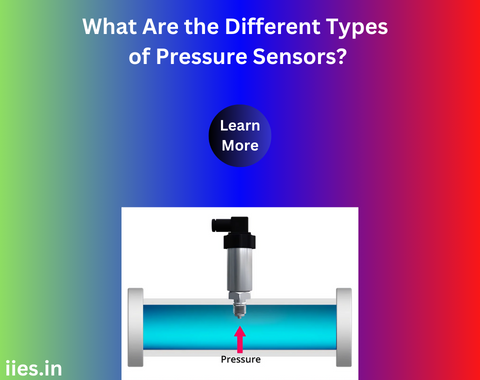
Pressure sensors, often overlooked in our daily lives, play a crucial role in various industries and applications. These devices are designed to detect and measure pressure changes in different environments, providing essential data for a wide range of purposes.
In this article, we will explore the evolution of pressure sensors, their underlying technologies, and the diverse applications that leverage their capabilities.
Early pressure measurement devices were simple and limited in their accuracy. As technology advanced, the development of more sophisticated sensors allowed for precise and reliable pressure readings.
Early pressure measurement devices were simple and limited in their accuracy. As technology advanced, the development of more sophisticated sensors allowed for precise and reliable pressure readings. The following are key milestones in the evolution of pressure sensors:
1. Mechanical Pressure Gauges:
The earliest pressure sensors were mechanical gauges that relied on the movement of mechanical elements, such as diaphragms or springs, to measure pressure. While these gauges served their purpose, they had limitations in terms of accuracy and durability.
2. Electrical Strain Gauges:
The mid-20th century saw the advent of electrical strain gauges, which used the deformation of materials to measure pressure changes. These gauges provided improved accuracy and paved the way for more advanced sensor technologies.
3. Piezoelectric Pressure Sensors:
Piezoelectric pressure sensors emerged as a significant advancement, utilizing the piezoelectric effect to generate electrical charges in response to pressure changes. This technology offered high sensitivity and rapid response times, making it ideal for dynamic pressure measurements.
4. Microelectromechanical Systems (MEMS) Sensors:
In recent decades, MEMS technology has revolutionized pressure sensing. MEMS pressure sensors are compact, cost-effective, and capable of integration into various electronic devices. This miniaturization has expanded the possibilities for pressure sensor applications across industries.
1. Strain Gauge Pressure Sensors:
Strain gauge sensors measure pressure by detecting the deformation of materials. They are widely used in industrial applications, such as monitoring pipelines and tanks, and can be found in automotive systems for tire pressure monitoring.
2. Piezoelectric Pressure Sensors:
Piezoelectric sensors are employed in applications that require high sensitivity and fast response times. Common uses include medical devices, aerospace, and industrial machinery where rapid pressure changes need to be accurately measured.
3. Capacitive Pressure Sensors:
Capacitive sensors measure pressure by detecting changes in capacitance. They find applications in consumer electronics, like smartphones and touchscreens, as well as in industrial settings where a non-contact method of pressure measurement is preferred.
4. Resonant Pressure Sensors:
Resonant sensors operate based on changes in the resonant frequency of a structure. These sensors are utilized in precision applications, such as barometric pressure measurements in weather stations and altitude sensing in aircraft.
1. Automotive Industry:
Pressure sensors play a crucial role in modern vehicles, monitoring tire pressure, airbag systems, and engine performance. These sensors contribute to safety, efficiency, and overall vehicle performance.
2. Industrial Automation:
In industrial settings, pressure sensors are employed to monitor and control various processes. From monitoring fluid levels in tanks to regulating hydraulic systems, these sensors enhance efficiency and safety in manufacturing environments.
3. Medical Devices:
Pressure sensors are integral to medical devices such as blood pressure monitors, respirators, and infusion pumps. They enable precise and real-time monitoring, ensuring accurate healthcare diagnostics and treatment.
4. Consumer Electronics:
Smartphones, tablets, and wearables utilize pressure sensors for functions like touch input and altitude measurements. These sensors enhance user experience and enable innovative features in electronic devices.
5. Environmental Monitoring:
Pressure sensors are used in weather stations to measure atmospheric pressure, aiding in weather forecasting and research. Additionally, these sensors play a role in environmental monitoring systems, assessing air and water pressure in various ecosystems.
6. Aerospace and Aviation:
In aviation, pressure sensors are critical for altitude measurements, airspeed indicators, and cabin pressure control. They contribute to the safety and performance of aircraft, ensuring accurate navigation and passenger comfort.
Pressure sensors have evolved significantly over the years, from simple mechanical gauges to advanced MEMS-based devices. Their diverse applications span across industries, impacting areas as varied as healthcare, automotive, and consumer electronics. As technology continues to advance, pressure sensors will likely become even more integrated into our daily lives, contributing to the efficiency, safety, and innovation of various systems and devices.
Indian Institute of Embedded Systems – IIES